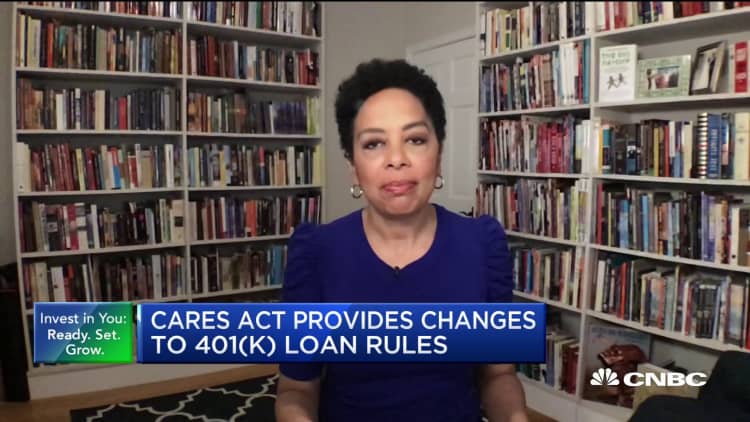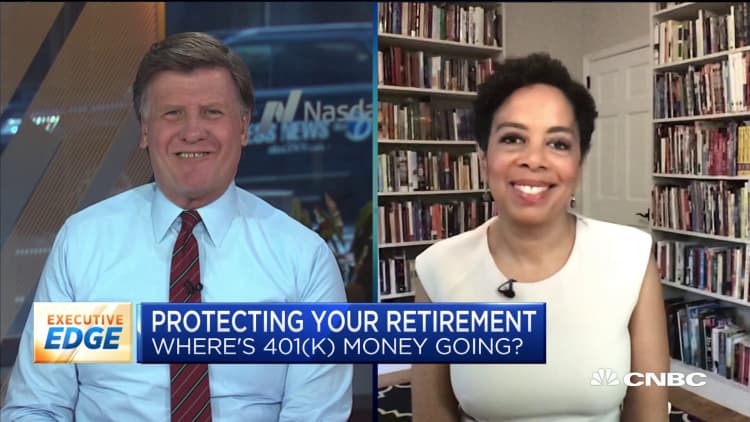Just as employees need a few extra dollars to get by, employers are increasing access to their 401(k) savings.
Make sure you proceed with caution before you tap those funds.
Close to 2 out of 3 companies have increased access to in-service distributions from employees' retirement accounts, according to a recent survey by Willis Towers Watson. The human resources consultancy polled 816 employers — representing 12 million employees — during the week of April 20.
In-service distributions are a way for workers to withdraw or roll over funds saved in their retirement accounts, and do so while they're still working for that employer.

It's a timely move, as the CARES Act is now allowing savers to take emergency withdrawals — known as hardship distributions — of up to $100,000 from their retirement plans.
Individuals who are under age 59½ can withdraw their 401(k) and 403(b) funds without the usual 10% early withdrawal penalty. This also applies to individual retirement accounts.
"You should see if there are other options," said Robyn Credico, defined contribution consulting leader at Willis Towers Watson. "If there are no other options, this is the last resort."
Spreading the tax load
Under normal circumstances, if you were to withdraw money from your retirement plan, you would be subject to a 10% penalty if you're under age 59½, along with income taxes on the amount you're taking.
The CARES Act allows you to pay the taxes over the course of three years. You can also replenish the amount that you pulled from your retirement account over that time .(And that's above the usual annual contribution limit.)
These distributions may be taken by people who themselves are diagnosed with coronavirus, or whose spouse or dependent has been diagnosed with it, or who experience adverse financial consequences from being quarantined, laid off or furloughed.
Three considerations

Here are three things to consider before you use your 401(k) plan as a lifeline.
• Find the cash for the income tax. Since your savings went into your retirement plan on a pretax basis, you'll be paying income taxes on the contributions and earnings withdrawn.
"You get a three-year period to pay the taxes to Uncle Sam," said Paul Porretta, partner at Pepper Hamilton LLP in New York.
Plan ahead to cover the tax bill and spread it over that period of time, perhaps out of your cash flow.
• Understand your plan's rules. Workplace retirement plans may allow participants to withdraw their cash in an emergency, but companies aren't required to permit this.
You'll need to talk to your human resources department or your plan administrator before you proceed.
"A 401(k) plan or a 403(b) plan, even if it allows for hardship withdrawals, can require that the employee exhaust other sources of money before taking a withdrawal," said Porretta
For instance, a plan could require that you take a loan from your 401(k) savings before allowing you to take the hardship withdrawal.
More from Smart Tax Planning:
Firms that took a PPP loan under $2 million get a break
Tax return filings crater as Americans hold off until July 15
The HEROES Act may allow you to undo this retirement withdrawal
Plan loans are subject to a different set of rules altogether. You can take them free of taxes if you meet certain requirements. Normally, you can borrow up to 50% of your vested account balance or $50,000, whichever is less.
The CARES Act doubles the amount you can borrow to $100,000 through Sept. 22, 2020.
Generally, if you lose your job with a 401(k) loan on the books, the amount borrowed is treated like a withdrawal and you're on the hook for taxes.
• Don't do it unless you absolutely have to. If you took money out of your retirement plan now, you'd be doing it at the worst possible time: cashing in when stock prices have been plummeting.
Consider other potential sources of money before you raid your retirement savings, including your emergency fund.
"The employee needs to make sure they really need this because if they don't, it's actually a good time to be invested and stay the course," said Credico of Willis Towers Watson.





